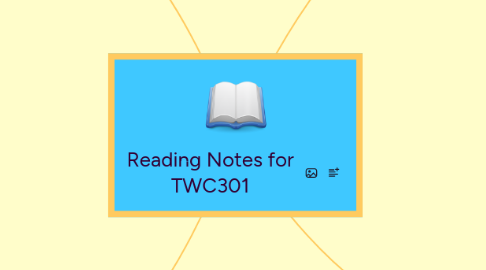
1. (Ch. 3) Technical Communication and Electronic Technologies
1.1. Introduction
1.2. Creating Documents
1.2.1. Word Processors
1.2.2. Presentation Software
1.2.3. Graphics and Imaging Software
1.2.4. Web-Authoring Software
1.2.5. Desktop Publishing Software
1.2.5.1. Layout and Design: Visuals
1.2.6. Help and E-Learning Authorizing Tools
1.2.7. Single-Sourcing Programs
1.3. Communicating and Collaborating
1.3.1. The Internet
1.3.2. The World Wide Web
1.3.3. E-mail
1.3.4. Ethics and Electronics Communication
1.3.4.1. Ethics In Writing
1.3.5. Electronic Messaging
1.3.6. Videoconferencing
1.3.6.1. Digital Tip: Conducting Meetings From Remote Locations
1.3.7. Groupware
1.4. The Future of Workplace Writing and Computer Technology
2. (Ch. 4) Ethics and the Workplace Writer
2.1. What is Ethics?
2.1.1. New node
2.2. Ethical Guidelines for Workplace Writers
2.2.1. New node
2.2.2. New node
2.2.3. New node
2.3. Ethics in Context
2.3.1. New node
2.3.2. New node
2.3.3. New node
2.4. Ethics and Technology
2.4.1. New node
2.4.2. New node
2.4.3. New node
2.5. Environmental Ethics
2.6. Avoiding Unethical Writing
2.6.1. New node
2.6.2. New node
3. (Ch. 2) Rhetoric & Technical Communication
3.1. Workplace problems
3.2. Rhetorical Problems
3.2.1. Exigency & Propose
3.2.2. Audiences
3.2.3. Workplace Writers
3.2.4. Contexts and Constraints
4. (Ch. 1) Technical and Professional Communication in the Workplace
4.1. Genres of Tech & Professional Communication
4.1.1. E-mails & Memos
4.1.1.1. Correspondence
4.1.2. Letters
4.1.3. Resumes
4.1.3.1. Job Search and Application
4.1.4. Technical Difinitions
4.1.5. Technical Decriptions
4.1.6. Websites
4.1.7. Technical Instructions
4.1.8. Manuals
4.1.9. Proposals
4.1.10. Informal Reports
4.1.11. Formal Reports
4.1.12. Presentations
4.2. Characteristics of Technical and Professional Communication
4.2.1. Rhetorical
4.2.2. Audience
4.2.2.1. ESL Tips
4.2.3. Technology
4.2.4. Ethical
4.2.5. Research
4.2.5.1. Research and Documentation
4.2.6. Professional
4.2.7. Visual
4.2.8. Design
4.2.8.1. Style and Language
4.2.9. Concise
4.3. PSA Solving Problems Through Technical & Professional Communication
4.3.1. Plan
4.3.2. Research
4.3.2.1. Research and Documentation
4.3.3. Draft
4.3.4. Review
4.3.5. Distribute
